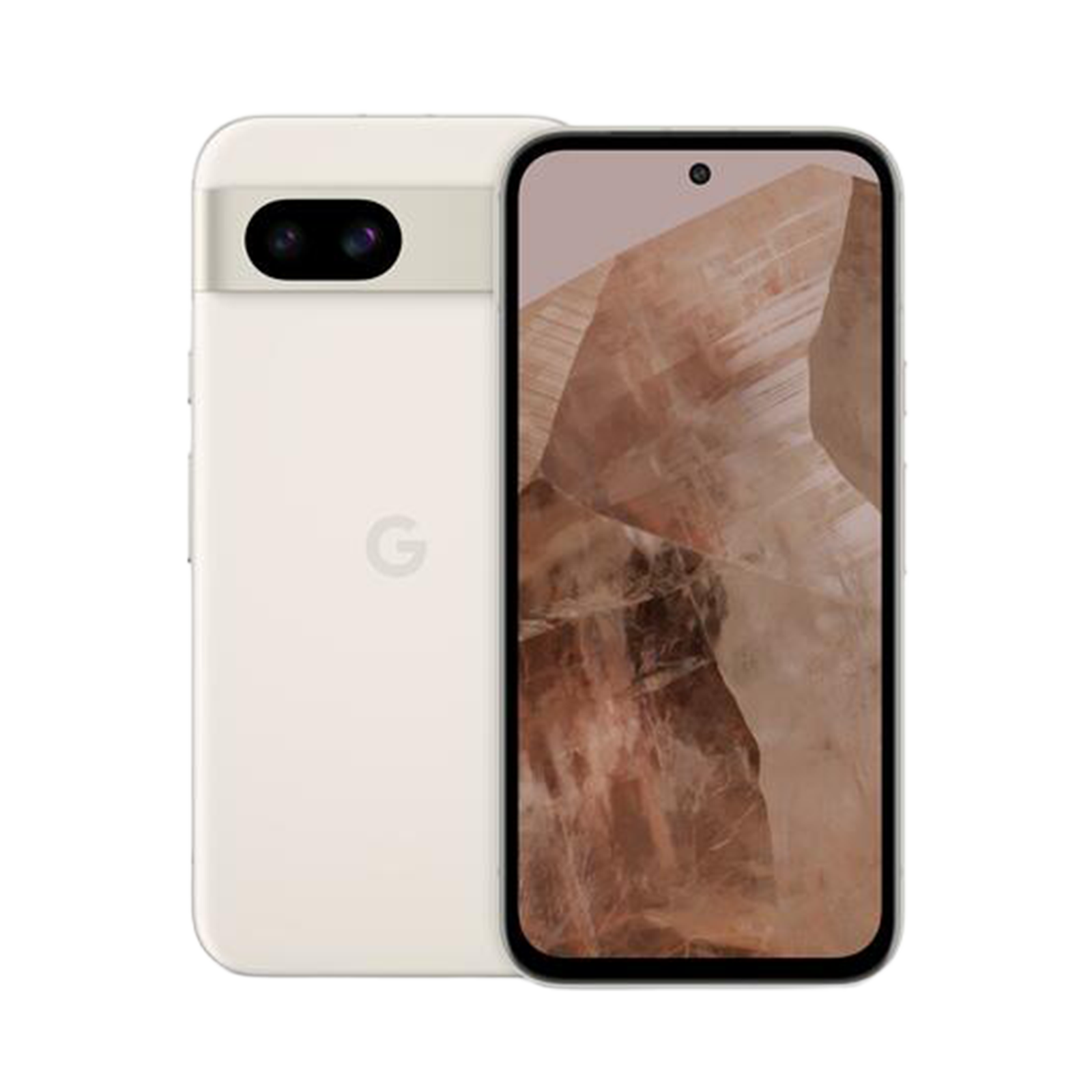Of late, the Google Pixel series has been the talk of the town. After all, the next-gen Pixel series launch is a few hours away. While details of the new Pixel phones are all over the rumour mills, this is the perfect time to take a look at the entire Google Pixel series, and how it has evolved over time.
From the early Nexus phones to the newer Pixel smartphones, here’s a look at every Google phone ever launched and the highlights of each model in the series.
Google Nexus One (2010)
The Nexus One was launched in 2010 and was Google’s first attempt at a smartphone. The brand would partner with OEMs to produce its Nexus series. While these partners contributed on the hardware front, Google would take control of the software. With the Nexus One, that would be HTC, and that is why the Nexus One had the signature four-button navigation bar at the bottom.
Launched with Android 2.1 Éclair, the Nexus One was somewhat a basic phone when it came to graphical capabilities. Though it got updated to Android 2.3 Gingerbread, its hardware capabilities were not enough to handle Android 4.0 Ice Cream Sandwich. Fortunately, Google already had a successor on the way – ready for Android 4.0.
Google Nexus S and Galaxy Nexus (2010-2011)
Google next partnered with Samsung to make the Nexus S, its second smartphone. Unlike the first device, the Nexus S ran Android 4.0 ICS and had a larger 4-inch display to make the most of the new visual elements.
It still had four buttons on the bottom, now remapped as per Samsung’s layout, and came with 512MB RAM, a 1,500mAh battery and 16GB storage. However, long-term software support wasn’t exactly a big deal in 2020, and the Google Nexus S would be updated only till Android 4.1 Jellybean.
The name gives it away, but the Galaxy Nexus was a result of a collaboration between Google and Samsung, again. This would be the last collaboration between the brands, but the device would feature a big spec bump – a larger 4.65-inch Super AMOLED display and 1GB of RAM.
Nexus 4 and Nexus 5 (2012 - 2013)
The Google Nexus series would then move to LG, which would be responsible for the Google Nexus 4 in 2012 and the Nexus 5 in 2013. The Google Nexus 4 would adopt a larger screen-to-body ratio and become the first Nexus phone with on-screen navigation buttons. It also added wireless charging to the series.
The Nexus 5, on the other hand, adopted a taller aspect ratio and a full HD (1080p) screen, which was a first for the series. Google would go on to make a semi-successor called the Nexus 5x a few years later in 2015, but apart from that, this would be the end of the partnership.
Nexus 6 and Nexus 6P (2014 - 2015)
Google’s last Nexus phones would be a collaboration between Motorola and Huawei, respectively. While the Nexus 6 brought a curvy look to the series, the Nexus 6P would add the first capacitive fingerprint sensor to the series – located at the back, under the camera module.
The Nexus phones were known for offering a clean software experience, which Android phone users were lacking at the time. But jumping between manufacturers didn’t let Google accomplish the all-Google goal.
Rivals like Apple were launching their phones with complete control over the hardware and software. Google was about to pull a page from the same book very soon – with its very first Pixel.
Google Pixel (2016)
A year after the last Nexus phone, we got the first Google Pixel. Google was now in control of all aspects of its phone, except the processor, which was still made by Qualcomm.
Such control resulted in some great optimisation, especially in the camera department, where the Pixel was rated one of the best cameras of the year by DxOMarkMobile.
The phone also offered some special perks, like unlimited cloud storage on Google Photos. In addition to the 5-inch screen on the Pixel, Google also had the Google Pixel XL, which offered a larger 5.5-inch screen.
Google Pixel 2 (2017)
With a more rectangular look, the Google Pixel 2 offered updated specifications along with front-facing speakers, improved cameras, and a missing headphone jack – a growing trend at the time.
The Pixel 2 XL featured an even bigger 6-inch display. But besides these changes, the second Pixel phone was not what you’d call revolutionary.
Google Pixel 3 (2018)
Google increased the screen size of the phones yet again with the Google Pixel 3 series, with the base phone now sporting a 5.6-inch panel, while the XL stuck to 6-inches. Again, there was no significant change to the phones except for improvements in the camera department and a new IP68 dust and water resistance rating.
Google would, however, release the Pixel 3a and Pixel 3a XL in 2019. The a-series would be a more affordable alternative to the expensive Pixel 3 series phones, thanks to lower-end specifications like Snapdragon 600-series chips instead of 800-series ones.
Google Pixel 4 (2019)
The Google Pixel 4 was among the most intriguing Pixel phones. Apart from improved specifications, the phone also came with a new USB-C port, which would go on to become the standard port for smartphones. It would also ditch the fingerprint sensors for IR-based facial recognition tech.
This was powered by IR emitters and sensors on the top of the device along with a radar-based gesture recognition technology that let users use gestures without even touching the phone. However, the accuracy of these gestures would be a hit-or-miss on launch.
The series would get further additions in the form of the Pixel 4a and Pixel 4a 5G as affordable successors to the 3a series. The Pixel 4a 5G would add support for 5G networks, which was a great improvement in countries where the next-gen networks were supported.
Google Pixel 5 (2020)
The Google Pixel 5 may not seem like standout launches in the series, especially after the Pixel 4, but it did have some praise-worthy additions. The phone came with a much larger 4,080mAh battery instead of a 2,800mAh unit.
All the IR-based features of the Pixel 4 series were dropped, and a new all-screen design was adopted, with the front camera and sensors now housed in a punch-hole cutout. The Google Pixel 5 was also the first to feature a higher refresh rate screen with a 90Hz panel. An affordable Pixel 5a would launch a year later.
Google Pixel 6 series (2021)
Perhaps the most important Pixel phone since the very first one, the Pixel 6 was the biggest upgrade in the Pixel 6 series. It came with a new revamped design, and for the first time – a chipset made by Google itself, finally making the ‘All-Google phone’ a reality. The Pixel 6 Pro also came with a 1440p (2K) OLED display panel.
The new Tensor chipset wasn’t as fast as its Snapdragon rivals of the year but boasted of several AI capabilities. These would help the phones utilise computational photography algorithms. Users could unblur older photos, including ones shot on different phones, and much more. These changes made the Pixel 6 series the fastest selling phones in the brand’s history.
Of course, an affordable Pixel 6a followed about a year later, sporting the same Tensor chip and new design that would continue to inspire all the Pixel phones that have launched since.
Google Pixel 7 (2022)
The Google Pixel 7 series was launched a year later in 2022. The phones looked a lot like the Pixel 6 – with design elements like a horizontal camera bar that went across the phone. Upgrades under the hood included a more powerful second-gen Tensor G2 chipset, bringing in more AI features to the mix.
A Pixel 7a would launch a year later, with a Tensor G2 chip and a watered-down version of the rest of the Pixel 7 to those looking to buy a new Pixel phone on a budget. However, it retained some premium features like the aluminium frame and wireless charging.
Google Pixel Fold (2023)
Google launched its first-ever foldable – the Pixel Fold in 2023. The device came with a smaller outer display, and a larger, folding inner display, a lot like the Galaxy Z series foldables of the time.
While it did mark Google’s entry into the foldable segment, the Pixel Fold was widely criticised for its thick bezels and not really beating other rivals in any aspect. However, the upcoming Pixel Fold successor, expected to launch soon, is rumoured to change a lot.
Google Pixel 8 (2023)
Alongside the Google Pixel Fold, Google also launched the Pixel 8 series last year. Improving over the Pixel 7 series, the Pixel 8 series offered incremental boosts to performance and a very subtle design changes.
The Tensor G3 offers better performance than its previous iterations, along with more AI power. The Pixel 8a launched earlier this year as a more affordable version of the phone.
Products in focus
Google Pixel 9 series (2024)
We are now closing on the launch of the Google Pixel 9 series. While not a lot about the phone is officially known, expect more performance and AI features from the new Android phone. There are also rumours of a successor to the Pixel Fold set to launch, but we will just have to wait and watch for it.
ALSO READ: Google Pixel 9 launch: Rounding up all the rumours and leaks
The Google Pixel 9 series is set to launch on August 14, so stay tuned to Unboxed by Croma for all the updates on the same.
Unleash your inner geek with Croma Unboxed
Subscribe now to stay ahead with the latest articles and updates
You are almost there
Enter your details to subscribe

Happiness unboxed!
Thank you for subscribing to our blog.
Disclaimer: This post as well as the layout and design on this website are protected under Indian intellectual property laws, including the Copyright Act, 1957 and the Trade Marks Act, 1999 and is the property of Infiniti Retail Limited (Croma). Using, copying (in full or in part), adapting or altering this post or any other material from Croma’s website is expressly prohibited without prior written permission from Croma. For permission to use the content on the Croma’s website, please connect on contactunboxed@croma.com
- Related articles
- Popular articles













Chetan Nayak
Comments